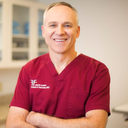Posted underFacelift q&a
A question about general v. conscious sedation during full facelift. How is it different for you when your patient is not out?
I am having a full facelift in June. I would like to choose "conscious sedation" to save money but I am wondering from the doctor's point of view, how is it different for YOU when the patient is not completely out? I also wonder- will I be bored? It's 5 hours or so lying on a table? I can't read, or listen to music! WIl I be out enough to make the time go? Will I have something in the drip that helps me forget?
Answers (40)
From board-certified doctors and trusted medical professionals
Dr. Eric J. Yavrouian, MD

Dr. Eric J. Yavrouian, MD
Board Certified Facial Plastic Surgeon
Answer
Dr. Kevin Sadati, DO

Dr. Kevin Sadati, DO
Facial Plastic Surgeon, Board Certified in Otolaryngology – Head and Neck Surgery
Answer
Dr. Shahriar Mabourakh, MD, FACS

Dr. Shahriar Mabourakh, MD, FACS
Board Certified Plastic Surgeon
Answer
Dr. Jed H. Horowitz, MD, FACS

Dr. Jed H. Horowitz, MD, FACS
Board Certified Plastic Surgeon
Answer
Dr. Larry S. Nichter, MD, MS, FACS

Dr. Larry S. Nichter, MD, MS, FACS
Board Certified Plastic Surgeon
Answer
Dr. Frank P. Fechner, MD

Dr. Frank P. Fechner, MD
Board Certified Facial Plastic Surgeon
Answer
Dr. Jon M. Grazer, MD, MPH, FACS

Dr. Jon M. Grazer, MD, MPH, FACS
Board Certified Plastic Surgeon
Answer
Dr. Arthur Dean Jabs, MD, PhD, FACS

Dr. Arthur Dean Jabs, MD, PhD, FACS
Board Certified Plastic Surgeon
Answer
Dr. Vincent N. Zubowicz, MD

Dr. Vincent N. Zubowicz, MD
Board Certified Plastic Surgeon
Answer
More Facelift Questions
See all Facelift Q&AWE SEND PRETTY
EMAILS
What’s trending? Who’s turning heads? Which TikTok myths need busting? We’ve got you. No fluff, no gatekeeping—just real talk. Get our free, unfiltered newsletter.